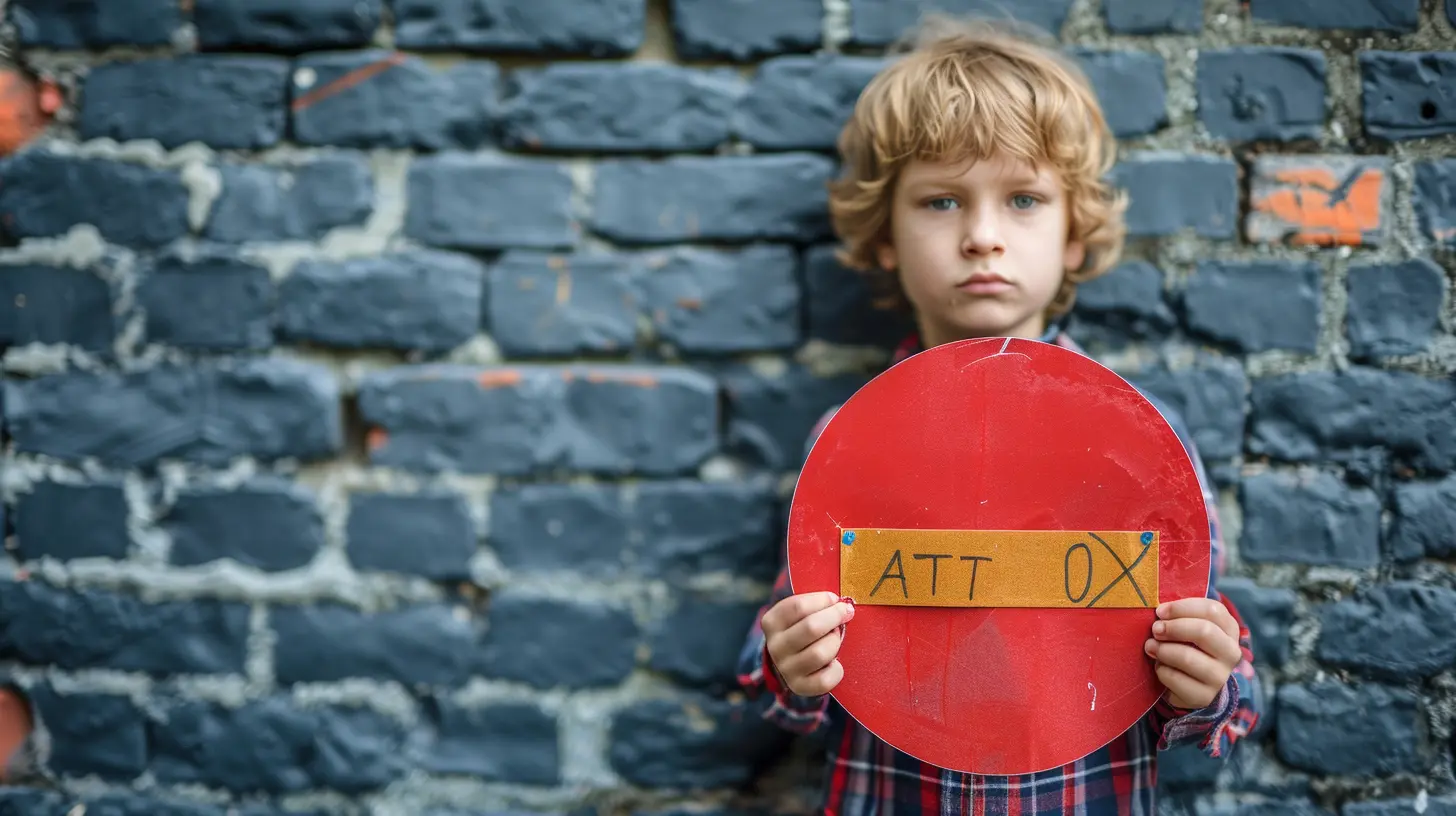The Art of Saying No: Teaching Kids Limits
12 November 2025
Parenting is a journey filled with love, laughter, and, let’s be honest, lots of negotiation. One of the toughest lessons to teach kids is understanding limits. No parent wants to be the "bad guy," but setting boundaries is essential for raising responsible, well-adjusted children.
Let’s dive into the art of saying no—without guilt, drama, or tantrums (well, at least fewer of them)!

Why Saying No is Important
As much as we wish we could grant our children’s every wish, real life doesn’t work that way. Setting limits teaches kids discipline, self-control, and patience—essential skills they’ll need as they grow.Think of it like this: If you give a child unlimited sweets, they’ll likely end up with a stomachache. Boundaries work the same way; they protect kids from harm, both physically and emotionally.
The Benefits of Teaching Limits
- Promotes emotional regulation – Kids learn to manage disappointment.- Encourages independence – They learn to problem-solve rather than expect instant gratification.
- Builds respect – Understanding “no” helps children appreciate boundaries in relationships.
- Prepares them for real life – The world won’t always say “yes,” and kids need to handle that reality.

The Challenge of Saying No
Saying no isn’t easy—especially when you’re facing puppy-dog eyes or a full-blown meltdown in the middle of the grocery store. It’s tempting to cave in for a moment of peace, but doing so can create bigger issues down the road.Kids are experts at testing limits. Their job is to push, and our job is to hold firm. The key is consistency. If “no” sometimes means “maybe” or “if you whine enough, I’ll say yes,” kids will push harder every time.

How to Say No (Without Feeling Guilty)
1. Be Firm but Kind
You don’t need to be harsh, but you must be confident. A simple, “No, we’re not buying that toy today,” is more effective than a long explanation. Keep it short, calm, and firm.2. Offer an Explanation (When Necessary)
Kids are naturally curious. If you say no without context, they may assume you’re just being mean. A brief explanation helps them understand.For example:
- “We can’t have candy before dinner because it will spoil your appetite.”
- “You can’t stay up late because your body needs rest to grow strong and healthy.”
This approach fosters understanding and reduces frustration.
3. Give Choices When Possible
Saying no doesn’t mean shutting down every option. If a child asks for something unreasonable, offer a reasonable alternative.For instance:
- If they want ice cream before dinner, say, “You can have ice cream tomorrow, or you can have a small treat after dinner.”
- If they want to stay up late, say, “You can read for 10 more minutes, or we can pick an extra bedtime story.”
This gives them some control while still maintaining the boundary.
4. Stay Consistent
Consistency is the golden rule of parenting. If you say no today but yes tomorrow for the same request, kids will keep testing to see when you’ll give in.Stick to your boundaries, even when it’s inconvenient. Over time, children learn that rules don’t change based on their mood or persistence.
5. Acknowledge Their Feelings
Saying no doesn’t mean ignoring emotions. It’s okay to validate their disappointment.Try saying:
- “I know you really wanted that toy, and I understand why you’re upset.”
- “I see that you’re frustrated, and that’s okay. But my answer remains the same.”
Acknowledging feelings fosters emotional intelligence and helps kids process their frustrations in a healthy way.
6. Model Healthy Boundaries
Kids learn by watching us. If they see you saying no to things (like unnecessary purchases or overcommitting yourself), they’ll understand that boundaries are normal and necessary.Set an example by saying things like:
- “I love helping others, but I need to take care of myself too.”
- “I’d love to stay up late, but my body needs rest.”
When children see healthy boundaries in action, they’re more likely to respect them.
7. Use Positive Reinforcement
When your child accepts a “no” without a meltdown, acknowledge it! A simple, “I appreciate how well you handled that” encourages them to respond maturely in the future.Kids thrive on positive reinforcement. Rewarding good behavior (even just with praise) reinforces the lesson far more effectively than punishment.

The Long-Term Impact of Setting Limits
Teaching kids to accept no gracefully pays off in the long run. They develop resilience, patience, and critical thinking skills—qualities that will benefit them throughout life.They’ll grow into adults who:
- Handle disappointment with maturity
- Respect others’ boundaries
- Understand delayed gratification
- Make responsible choices
Handling the Toughest Nos
Some nos are harder than others, especially when you’re setting limits on screen time, candy, or bedtime. Here’s how to handle common challenges:1. Screen Time Battles
Kids are glued to screens these days, so setting limits is crucial. Instead of just saying, “No more tablet,” try:- “You can have 30 minutes now, or save it for later—your choice.”
- “Let’s play a board game together instead.”
Give them alternatives so they don’t feel deprived.
2. Public Meltdowns
Ah, the dreaded store tantrum. Stay calm, get down to their level, and say firmly, “I know you’re upset, but we are not buying that today.” Then, ignore the whining and stick to your decision.If necessary, remove them from the situation. Giving in “just this once” teaches them that public meltdowns work.
3. Saying No to Unsafe Behavior
Some nos are non-negotiable, like running into the street or touching a hot stove. Make these boundaries crystal clear and explain the safety reasons behind them.Use a firm but warm tone:
- “I can’t let you do that because it’s dangerous.”
- “My job is to keep you safe, and that’s why this rule exists.”
Safety limits aren’t up for debate, and children need to understand that.
Final Thoughts
Saying no is a crucial part of parenting. It’s not about being mean—it’s about teaching important life skills. Kids may not thank you now, but trust me, one day they’ll appreciate the lessons in patience, self-control, and respect.Hold firm, stay consistent, and remember: You’re not just raising a child—you’re shaping a future adult.
all images in this post were generated using AI tools
Category:
Parenting BoundariesAuthor:

Noah Sawyer
Discussion
rate this article
1 comments
Verity Newton
This article beautifully highlights the importance of teaching kids about boundaries. Saying "no" not only fosters independence but also helps children navigate the complexities of life. Establishing limits empowers them to make better choices and respect others’ boundaries. A must-read for every parent striving for balanced upbringing!
November 12, 2025 at 4:45 AM


